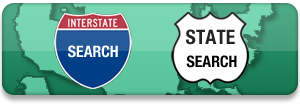This post is truly a tale of two hotels. Families finding themselves in Springfield, Missouri can choose from a fairly standard array of motels and hotels, or they can pick between two unique choices: the Ramada Plaza Hotel and Oasis Convention Center for family-friendliness or the new Hotel Vandivort for boutique downtown chic. If I could, I’d squish together the best amenities and features at both to create the ultimate kid-friendly, upscale hotel experience, but alas, two reviews will have to do. Good luck choosing!
Option 1: indoor pool bliss for kids, lots of complimentary amenities for parents

While in Springfield, I spent two nights at the Ramada Plaza Hotel. A little bit of history: once upon a time, this Ramada, located at 2546 N. Glenstone, was the biggest Howard Johnson’s in the country. Now, it’s a fairly standard Ramada, with several upgrades and a big surprise in the center of the property.
The hotel building could appear retro in all the wrong ways (re, tired and outdated). Instead, refurbishments have rendered it bright, clean, airy, and stylish on the interior. Rooms are fairly standard, though certainly more stylish than most moderate hotel rooms, and common spaces are on-trend. Amenities parents will like include free parking, free wifi, an above-average free breakfast, and a large laundry room on-site. The Fire and Ice restaurant, located on property right off the lobby, is unique with its ice bar (set your drinks down and they’ll stay frosty cold) and carefully curated menu, but prices are a bit high to encourage family dining. If you can get away for an hour or so with your spouse, I recommend it; the food is fantastic and the wine list is extensive. If not, opt for more kid-friendly fare in Springfield.

The huge draw for kids lays in the heart of the property, in the huge indoor atrium. Here, families will find a huge free-form heated indoor swimming pool and hot tub, situated in a truly tropical atmosphere. The vegetation surrounding the pool area is the real deal; I was told the banana trees even bear fruit. There’s an outdoor pool as well, perfect for muggy summer nights.
If you bring kids here, you’ll want a poolside room. Ground floor rooms have garden patios that are truly ‘garden-ish’ and open onto the pool via pebblestone walkway (pictured above). Upper rooms have large balconies overlooking the pool. Yes, you can hear pool-related noise in your poolside room, but during my stay, it died down by 10 pm, even though the pool is open until 11 pm. Note: Ground floor rooms opening toward the parking lot instead of the pool seem like they’d be less desirable, but if you don’t care about a pool view (to watch kids), they actually feature a much more private and pretty patio that’s totally enclosed and lush with flowering plants.

Room amenities include all you’d expect, including standard coffee service (nothing to write home about), a mini-fridge, and a microwave (always a plus). In a nutshell, the Ramada ticks off all the ‘bring the kids’ boxes: great swimming pool complex, free breakfast, no nickel and diming on the extras. You’re within easy driving distance of all things Springfield. Room rates at the time of my visit were approximately $129 for a standard room mid-week.
Option 2: Urban stay, with a taste for downtown Springfield
Downtown Springfield, like many downtown districts in cities across the US, has been making a comeback in recent years, with more local dining, improvements in the works at the historical downtown plaza, and a growing artist and performance community.

The latest coup: the first boutique hotel is nearing completion. Hotel Vandivort repurposes the beautiful historic Masonic Temple at 305 E. Walnut, fully embodying the exposed brick, high ceilings, and chic charm of this 1906 building. Photos to come; click on the website above for artist renderings until June 2015.
With LEED Gold certification, an upscale eatery and bar, and plenty of open space for socializing and mingling, it’s certainly the ‘grown up’ place to spend a few days in Springfield. However, we actually have found boutique hotels to be wonderful options for families with older kids. What parents give up in convenient amenities like free breakfast and parking, they gain in refinement, city character, and culture. Because we really enjoy getting to know the heart of a city instead of its suburbs, boutique hotels are often where we like to stay. At very least, it’s always a viable consideration.
At the time of this post, Hotel Vandivort is a few days away from opening. I enjoyed a hard-hat tour in mid-May 2015, during which I saw finished rooms. Amenities include everything parents could want in terms of techy extras: the window blinds are on remote, room ‘mood’ settings can be set, so that all lights can be dimmed, the TV turned off, and the nightlight turned on at bedtime, and personal music can be piped into the rooms’ audio systems with ease. The coffee service is top of the line, and each room has a fridge as well as snack basket with local products. Everything from tile in the bathrooms to linens on the beds are luxury. Note: if you have three kids or more, you may want a suite. The Master Suite may be worth the upgrade: I saw the fireplace, which faces both indoors and outdoors as it connects with a large outdoor balcony with lots of living space, and yes, that feature alone makes me want to stay here.
Room rates are surprisingly not much higher than the Ramada and other area hotels, though the suites will set you back more. You’ll still get free wifi, and while room service may add up for a hungry family, Springfield’s famous Hurts Donuts is within walking distance. The surrounding neighborhood looks a little downtrodden, but it’s changing by the day. Staying in the heart of Springfield, families will see the revitalization of this area for themselves.

Note: make a stop sometime during your stay to Springfield Hot Glass, located at 314 S. Campbell. This family-owned glass studio may not seem like a kid-friendly stop, but in fact features a fantastic open studio, where, if you’re lucky, you can watch glass blowing or other glass work in progress.
In downtown Springfield, families can also see the exact spot where Wild Bill Hickok has the honor of starting the first documented shootout of the American West. Look for the plaques in the city square.
Which Springfield hotel option would appeal more to your family?






































